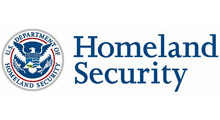 |
| The technology will strengthen security and streamline screening operations |
"These state-of-the art technologies will strengthen security and streamline screening operations while making air travel more convenient for passengers," said Secretary Napolitano. "Explosives trace detection technology, enhanced inline baggage screening systems and improved surveillance capabilities are important elements of our layered aviation security strategy to protect the flying public from terrorism."
Transportation Security Administration has expanded the random use of explosives trade detection technology |
The Recovery Act funded explosives trace detection units, announced by Secretary Napolitano, will effectively and efficiently screen checked and carry-on baggage for explosives residue. Transportation Security Administration (TSA) has expanded the random use of explosives trade detection technology - which can also be used to screen the hands of passengers or their clothing - as part of the Department's efforts to strengthen aviation security at U.S. airports and around the world since the attempted terrorist attack on December 25, 2009.
More than 7,000 explosives trace detection units are currently in use by TSA at U.S. airports.
In addition, $30.4 million in ARRA funding announced will be used to expand an inline baggage screening system at Minneapolis St. Paul International Airport (MSP). Inline baggage handling systems use state-of-the-art technology to screen checked baggage for explosives more quickly, while streamlining the ticketing and boarding process. The systems also provide on-screen resolution capabilities for TSA officers screening baggage, reducing the number of re-scans and physical bag searches.
ARRA committed more than $3 billion for homeland security projects through DHS and the General Services Administration |
On March 5, Secretary Napolitano announced the initial deployment of ARRA-funded advanced imaging technology (AIT) units to 11 airports - the first of many to receive this new technology as the result of the Recovery Act. AIT units are designed to bolster security by safely screening passengers for metallic and non-metallic threats - including weapons, explosives and other objects concealed under layers of clothing.
Last month, Secretary Napolitano highlighted nearly $600 million in ARRA investments devoted to securing the U.S. aviation system and creating jobs in local communities across the country since President Obama signed the bill into law on February 17, 2009. ARRA committed more than $3 billion for homeland security projects through DHS and the General Services Administration (GSA). Of the $1 billion allocated to TSA for aviation security projects, $734 million is dedicated to screening checked baggage and $266 million is allocated for checkpoint explosives detection technologies.
To learn more about the DHS Recovery Act projects, click here.


















